Light Transmission
Light transmission occurs when light passes through a material such as air, water, glass, or even living tissues. The ability of a material to transmit light is determined by its transparency and refractive index. Transparent materials allow light to pass through with minimal absorption or scattering, while materials with higher refractive indices can bend or slow down the light as it passes through.Sound Transmission
Sound transmission involves the propagation of mechanical vibrations through a medium such as air, water, or solids. When an object vibrates, it creates sound waves that travel through the medium, causing particles to compress and rarefy. The speed of sound transmission varies depending on the medium's density and elasticity.Heat Transmission
Heat transmission, also known as thermal conduction, occurs when heat energy moves from a warmer object to a cooler one. This process is governed by the material's thermal conductivity, thickness, and the temperature gradient between the two objects. Materials with high thermal conductivity, such as metals, are efficient heat conductors, while insulating materials like wood or foam have lower thermal conductivity.Electricity Transmission
Electricity transmission involves the movement of electric charge through conductive materials such as metals or through an electrical circuit. Conductors allow the flow of electrons, enabling the transmission of electrical energy, whereas insulators impede the flow of electrons.Study Guide for Transmission
To understand the concept of transmission in science, consider the following key points:- Identify examples of transmission in everyday life, such as light passing through a window, sound traveling through a wall, or electricity flowing through wires.
- Explore the properties of materials that affect their ability to transmit energy or information, such as transparency, density, conductivity, and refractive index.
- Conduct experiments to observe and measure the transmission of light, sound, heat, or electricity through different materials and mediums.
- Discuss real-world applications of transmission, such as optical fibers for transmitting data, insulation for conserving heat energy, or electrical conductors for powering devices.
- Examine how advancements in technology have improved the efficiency of transmission methods, leading to innovations in communication, energy transfer, and material design.
◂Science Worksheets and Study Guides Fifth Grade. Newton's Laws of motion
Study Guide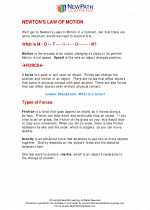 Newton's Laws of motion
Newton's Laws of motion  Activity Lesson
Activity Lesson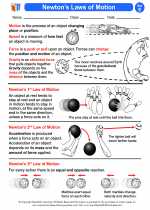 Newton’s Laws of Motion
Newton’s Laws of Motion  Worksheet/Answer key
Worksheet/Answer key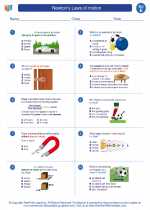 Newton's Laws of motion
Newton's Laws of motion  Worksheet/Answer key
Worksheet/Answer key Newton's Laws of motion
Newton's Laws of motion  Worksheet/Answer key
Worksheet/Answer key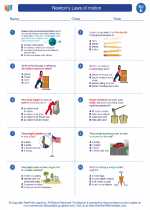 Newton's Laws of motion
Newton's Laws of motion  Worksheet/Answer key
Worksheet/Answer key Newton's Laws of motion
Newton's Laws of motion  Vocabulary/Answer key
Vocabulary/Answer key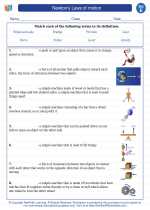 Newton's Laws of motion
Newton's Laws of motion  Vocabulary/Answer key
Vocabulary/Answer key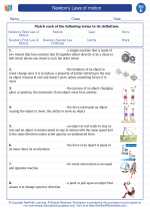 Newton's Laws of motion
Newton's Laws of motion 

 Activity Lesson
Activity Lesson
 Worksheet/Answer key
Worksheet/Answer key
 Worksheet/Answer key
Worksheet/Answer key
 Worksheet/Answer key
Worksheet/Answer key
 Worksheet/Answer key
Worksheet/Answer key
 Vocabulary/Answer key
Vocabulary/Answer key
 Vocabulary/Answer key
Vocabulary/Answer key

The resources above cover the following skills:
PHYSICAL SCIENCE (NGSS)
Motion and Stability: Forces and Interactions
Students who demonstrate understanding can:
Support an argument that the gravitational force exerted by Earth on objects is directed down.